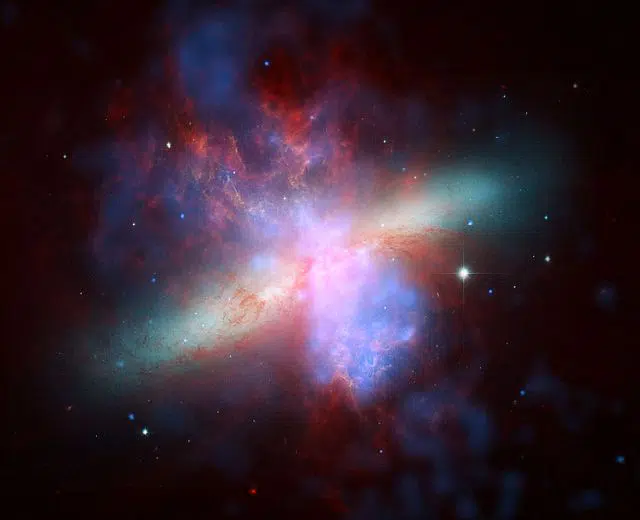
NASA astronomers have found evidence of what they believe could be the first planet ever to be discovered outside our galaxy. The exoplanet, which is roughly the size of Saturn, has been detected more than 28 million light years away from Earth.
Nearly 5,000 “exoplanets” – worlds orbiting stars beyond our Sun – have been found so far. All of them have been located within the Milky Way galaxy. The possible planet discovered by NASA‘s Chandra X-Ray Telescope is in the Messier 51 galaxy.
An exoplanet is a planet outside of our solar system that normally orbits a star other than our own sun in our galaxy. Until now, all other exoplanets have been found in the Milky Way. Most of them have been found less than 3,000 light-years from Earth.
This new result is based on transits, where the passage of a planet in front of a star blocks some of the star’s light. It yields a characteristic dip in brightness that can be detected by telescopes.
NASA telescope discovers planet
The planet was detected by the Chandra X-ray Observatory, a NASA space telescope that is 86,000 miles away from the Earth. It been given the name M51-1 and been hailed as a breakthrough in the hunt for distant planets.
Dr. Rosanne Di Stefano and her colleagues searched for dips in the brightness of X-rays received from a type of object known as an X-ray bright binary. These objects typically contain a neutron star, or black hole, pulling in gas from a closely orbiting companion star.
The material near the neutron star or black hole becomes super-heated and glows at X-ray wavelengths. The region producing bright X-rays is small, so a planet passing in front of it could block most or all of the rays, making the transit easier to spot.
More data is needed to verify the discovery; however, its large orbit means it will not repeat the transit for another 70 years. NASA said if the planet does exist it “likely had a tumultuous history and violent past.”
Orbit around neutron star, or black hole
It currently orbits a neutron star or black hole with a companion star roughly 20 times that of the Sun. In the future, the star could also explode as a supernova and blast the planet once again with extremely high levels of radiation.
Researchers will search the archives of Chandra, which has substantial datasets for some 20 galaxies. They will also check the European Space Agency satellite XMM-Newton, for more exoplanet candidates in other galaxies.
The researchers freely admit that more data is needed to verify their interpretation. Another interesting line of research is to search for X-ray transits in Milky Way X-ray sources to discover new nearby planets in unusual environments.
See all the latest news from Greece and the world at Greekreporter.com. Contact our newsroom to report an update or send your story, photos and videos. Follow GR on Google News and subscribe here to our daily email!



